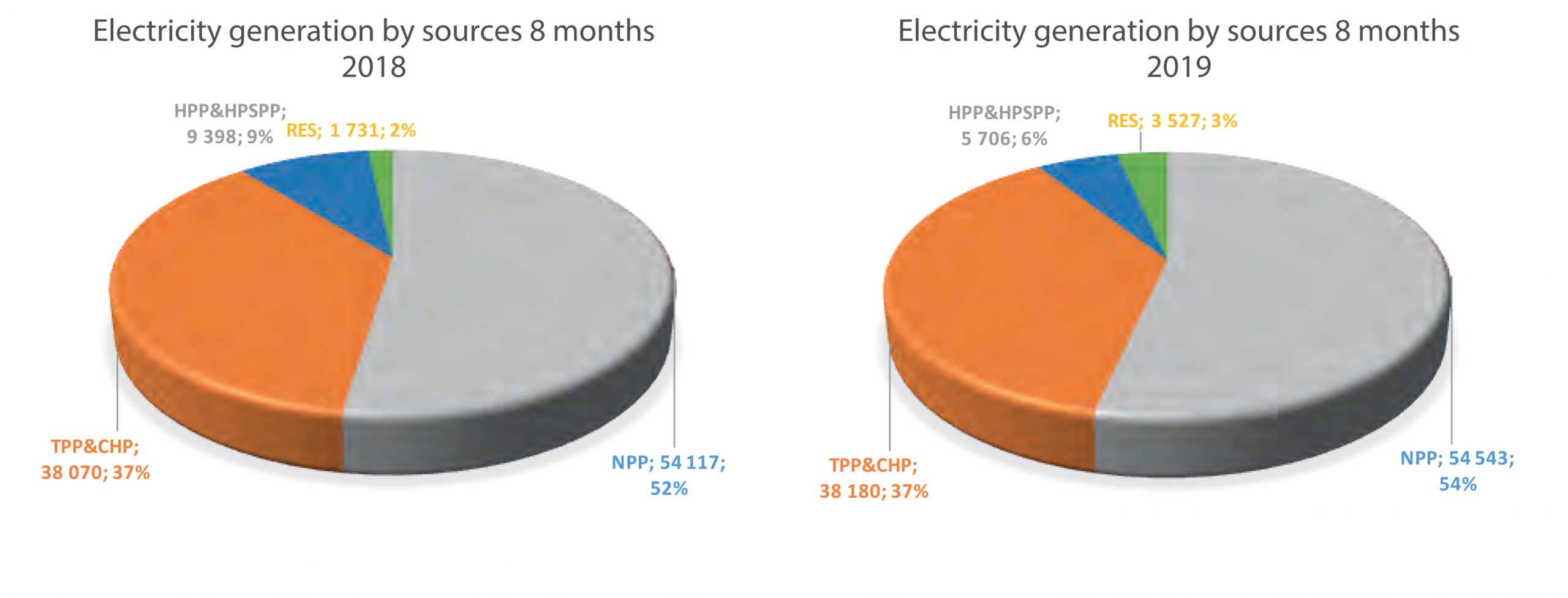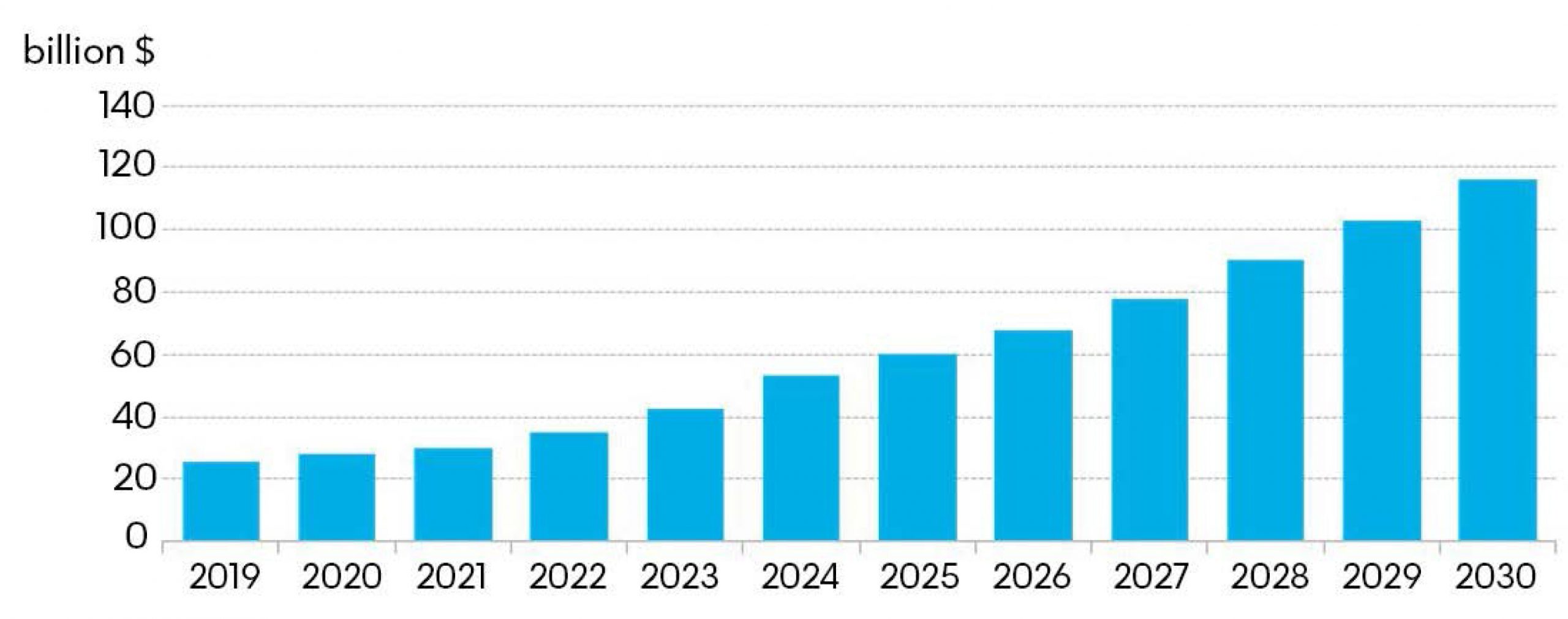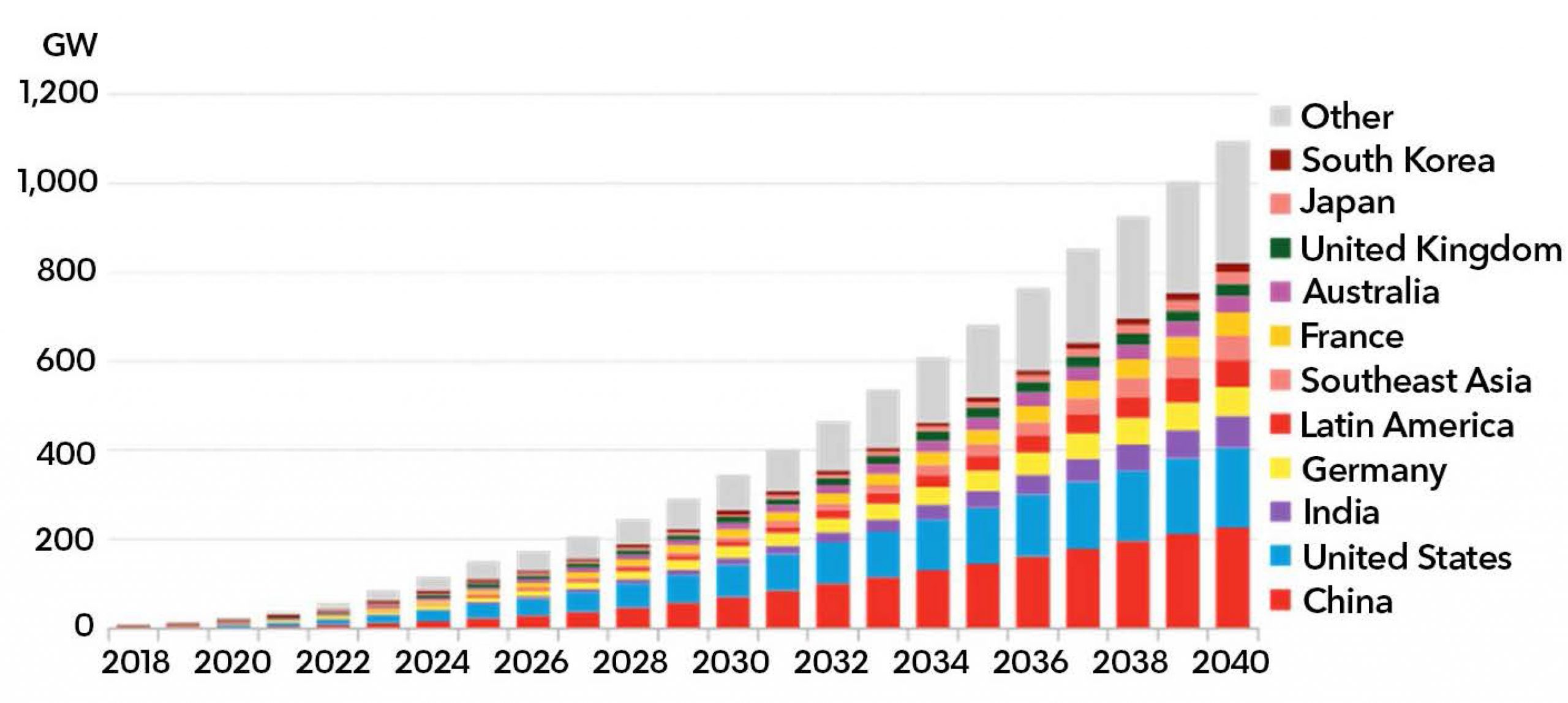The Ukrainian energy sector is in a state of reform since Ukraine’s accession to the Energy Community of Southeast Europe. The primary legislation implementing the provisions of the EU Third Energy Package now includes the provisions of Directive 2009/72/EC as a basis for reforming the electricity market in Ukraine. Reform process directs towards a target model of organization of the national electricity market in line with EU practice. This implies further integration of the energy sector with neighboring markets into a unified regional market, and further into a single EU energy market. Ukrainian renewable energy sector going through accelerated development, growing at least 2 times over the past year, but it has not yet reached indicators of irreversible transition to carbon-free energy and a significant direct impact on the functioning of the energy market, see Fig. 1.

New Market – New Challenges
The new electricity market provides for changed mechanisms for the purchase and sale of electricity:
- bilateral agreements;
- day-ahead market;
- intraday market.
The market needs additional implementation of mechanisms that balance the production and consumption of electricity in real time, manage congestion in the IPS of Ukraine, eliminate electricity imbalances and improve its quality, require the operation of the balancing market and the ancillary services market. As before, the RES sector needs state support.
As of July 2019, over € 3 billion has been invested in the RES sector of Ukraine. Confirmed statistics on investment and implementation of RES projects (see Figure 2) show a positive trend.

According to the National RES Action Plan for 2020, the share of green energy in total final consumption should be 11%, and according to The Energy Strategy of Ukraine for the period until 2035 the RES share in the primary energy supply structure should be 25%. However the pace of RES implementation is significantly lower at present than were planned, see. Fig. 3.

Achieving the targets requires not only large investments (approximately € 30 billion according to the State Agency on Energy Efficiency (SAEE)), but also the urgent implementation of technical and regulatory balancing tools and simplification of new generation access to Ukraine’s power grid – as early as 2020, the balancing capacity deficit will make 500 MW and will increase to 2 GW by 2025.
Unfortunately, the conditions of functioning of the energy market (restriction of access of Energoatom and Ukrhydroenergo to the open market within the framework of PSO, non-transparent regulation of operational segments of the market, laying of the upper price limit in the intraday market and “a day ahead” etc.) does not add a competition to energy sector and not conducive to development of the services market, which is not formally related to the “green” tariff.
Under such excessively regulated conditions, market participants refuse to participate in new market segments, including the market for balancing and services for the accumulation of excess daily, weekly, monthly and seasonal energy from RES, although these are the priority areas of development alongside additional investment in RES generation. The implementation of these projects should now be given superiority.
Actualization of ancillary energy services
In addition to the unresolved problems in the energy sector as a whole, and view of the apparent lag behind the planned pace of RES implementation, Ukraine is lagging behind the global trends in the development of the balancing market through electric energy storage (EES). A new powerful market is formed in the world, emerging due to RES and greatly accelerating the implementation of RES and the decarbonization of energy. The emergence of such a market has a positive feedback – the more energy storage at different levels is implemented at all levels, the more and more harmonious the further implementation of VREs into the grid will be. According to Bloomberg New Energy Finance (BNEF) research released in the second half of 2019, a new multi-billion dollar storage systems market will grow by at least sixfold by 2030, thanks to the cheapening of lithium-ion technology.

Unless immediate efforts are made to create the right conditions for the participation of all categories of producers and prosumers in balancing and improving the electricity quality market, Ukraine will soon be included in the category “Other”, see. Fig. 5.

The world trend is energy conservation
Efforts on the energy transition to decarbonized energy have just received a major impetus in the EU, where they have indicated that they intend to fund technological and infrastructural changes, that will balance in achievable term the amount of carbon dioxide emissions from human activity with the ability of the environment to absorb carbon compounds with oxygen. The transition to RES is accompanied by the implementation of energy-saving solutions and technologies.
According to EUEA estimates, Ukraine has enormous untapped energy-saving potential in the construction sector – especially in the housing and civil engineering sectors. Nearly 155,000 existing residential buildings (approximately 1 billion m2) and nearly 53,500 public buildings need energy-saving measures, see Fig. 6 (excluding new construction). To do this, we need to attract multibillion-dollar investments.
However, thermal modernization, which is being implemented in conjunction with the replacement of local energy systems with appropriate renewable solutions, can significantly contribute to the implementation of RES. For this, the state must create effective conditions and remove artificial obstacles.

What does the new energy expect?
Law of Ukraine “On Amendments to Some Laws of Ukraine on Ensuring Competitive Conditions for the Production of Electricity from Alternative Energy Sources” № 2512-VIII of 25.04.2019 introduced a new auction system for RES electricity producers instead of “green tariffs”, the last date for pre-PPA contracts (regardless of project size) is December 31, 2019. The law is in effect until December 31, 2029. Projects already operating under the “green tariff” will operate until 2030.
The purpose of the Law is to bring Ukraine closer to EU legislation on RES. The auction system will run concurrently with January 1, 2020, in conjunction with green tariffs already received by RES producers. The auctions are held twice a year – no later than 01 April and 01 October of the respective year. The auction winners will be supported for 20 years.
Requirements for auction participants:
- confirmed ownership/lease rights to the land plot;
- concluded grid connection agreement;
- information about the ultimate beneficial owner, management information and related persons;
- extract from the Unified State Register of Legal Entities, Individual Entrepreneurs and Public Organizations of Ukraine;
- securing bidding bonds (bank guarantee).
The Green community generally appreciated the Law, but it contained a number of shortcomings that were explained by “technical” errors. In autumn, they were partially corrected, but in general, the implementation of RES requires further support from the state. It is expected that some of the changes that will continue to ensure a competitive environment for electricity generation and state support for RES generation will be introduced into the Law before the New Year.
Ukraine needs a comprehensive consideration of renewable energy issues, and much remains to be done. In addition to creating attractive investment and business conditions, it is necessary to create sustainable conditions for own national RES technologies research and development work. This will give a strong impetus to the economy in a number of energy-related industries and improve Ukraine’s export potential
The setting of strategic objectives by the Government and their precise specification should precede any political declarations that are contrary to real action. In this sense, the Horizon-2025 in Ukrainian RES and Energy Efficiency Market should give a clear and unalterable signal to investors about government plans, not change the previously announced conditions, listen to the business community’s feedback on how business can promote the implementation, and abandon the practice of manual regulation of the market. Medium-term objective (goal by 2025) – to help overcome existing barriers and provide projected revenue streams for investors from the implementation of projects in Ukraine’s green energy and energy efficiency.